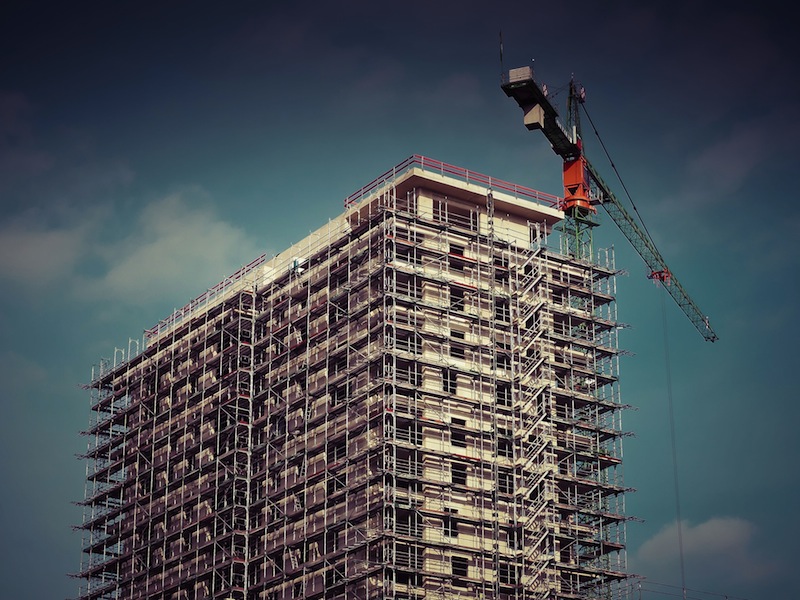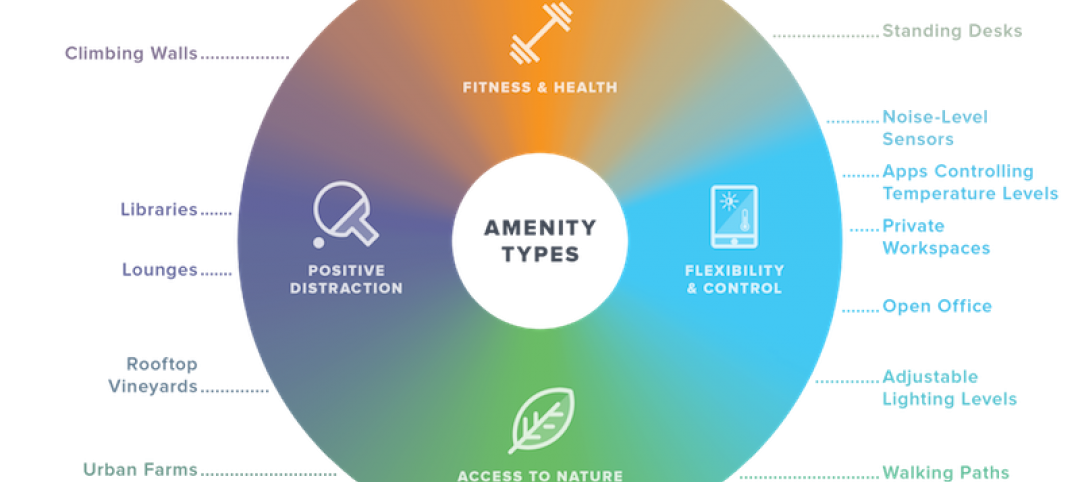Nonresidential construction activity should remain strong in the U.S. through 2016, although labor shortages and the rising cost of sheet glass will make projects more expensive, according to JLL’s latest Construction Outlook.
JLL sees the South as the country’s “new frontier” for construction, thanks to the region’s low labor and land costs. Conversely, the erosion in oil prices is cramping building in places like Houston whose economics rely heavily on their energy industries.
Sustainable office development pushed renovation activity to new heights in 2015. “This push for new build-outs was not limited to office spaces, with retail and industrial developers redeveloping existing space to include new technology and engage consumers in unique ways,” JLL’s 34-page report states, adding that this trend should continue this year.
The report sees positive signs in construction employment, which outpaced the country’s 4% growth rate. JLL also surveyed development firms that, in the main, agree that construction activity should be steady at least through the second half of 2016, and possibly well beyond that.
Building materials costs, which had increased incrementally since 2010, appear to have plateaued last year. The steel market was flooded by low-cost product, for example. The one notable exception was sheet glass, whose prices have skyrocketed, leading, some construction companies to acquire glass makers to stabilize their costs.
While materials costs are always a concern, JLL notes that labor costs—wages and benefits—have spiked, particularly for skilled workers. Average weekly wages for construction workers rose in December 2015 by 4.2% compared to the same month a year earlier. Massachusetts, New York, and Washington D.C. have the highest weekly construction wages; Georgia, Missouri, and Colorado the lowest.
Industrial sector a ‘shining star’
JLL estimates the value of construction put in place rose 10.2% last year through November, with the Education (up 12% in construction activity) and Manufacturing sectors driving the train. But all of the top construction markets also saw at least a 1% increase in construction costs from the second to the fourth quarter of last year.
“For financial viability, project sponsors will need to strike a balance between the lower costs for some materials, like steel, and the ever-increasing cost of glass and labor,” says Todd Burns, President, Project and Development Services, JLL Americas. “Location continues to be a key driver in finding success throughout various industry sectors. With a slowed growth in construction, executives need to think strategically in terms of where they will invest.”
The researcher sees parallels between construction costs and rents. It points specifically to the San Francisco Bay Area, where construction and office leasing are among the highest in the country.
Nationwide, office deliveries outpaced starts for the first time since the recession, in terms of total square footage, and approached pre-recession numbers. Office completions in every quarter last year were higher than corresponding quarters in 2014. And with the exception of Houston, where office construction was off nearly 42% last year, office construction activity was steady in most top markets.
As of the fourth quarter of last year, there were 88.5 million sf of office space under construction, nearly 9% more than in fourth-quarter 2014. The quarter-to-quarter gains in industrial construction were even more pronounced during this period: 23%. (JLL refers to the industrial sector as nonresidential construction’s “shining star,” and estimates that 178.4 million sf of industrial space were delivered last year.)
Dallas (with 19.7 million sf of industrial space under construction as of the fourth quarter) and Atlanta (19.6 million sf) eclipsed California’s Inland Empire as this sector’s leading markets.
JLL’s take on Retail construction is that while it was off slightly last year, it still showed fourth-quarter gains in all major markets. (Ironically, Houston was the leader, with 2.9 million sf under construction in the fourth quarter, followed by New York City, with 2.7 million.) Retail vacancies across the country declined as the economy improved.
“We have never seen a greater sense of urgency from retailers to address their stores’ role in delivering a ‘True Omni Branded Experience’ for consumers,” says Aaron Spiess, Executive Vice President, Managing Director, Project and Development Services, JLL Americas. “The pressure of emerging digital experiences and platforms has escalated the need to exceed consumer expectations of the store. With the continuous advent of new e-commerce capabilities, this is a trend we expect to continue.”
The 2016 general election looms large in JLL’s forecast. “The upcoming fight over the debt ceiling could delay government buildings and other public works,” its report states. JLL also notes that a slowing global economy could have a silver lining by causing material prices to fall further.
But don’t expect wage costs to taper off any time soon, it predicts. “There remains a dearth of trained construction employees, especially in trade positions, and wages are rising as a result.”
In its final analysis, JLL foresees construction starts will increase at a slower rate than last year, but ahead of the overall economy. “Demand from downstream markets such as Austin, Chicago, Atlanta, and Charlotte will bolster the industry, and construction profit margins will continue to rise, keeping construction growing at a faster rate than the overall economy.”
Related Stories
Market Data | Aug 20, 2017
Some suburban office markets are holding their own against corporate exodus to cities
An analysis of mortgage-backed loans suggests that demand remains relatively steady.
Market Data | Aug 17, 2017
Marcum Commercial Construction Index reports second quarter spending increase in commercial and office construction
Spending in all 12 of the remaining nonresidential construction subsectors retreated on both an annualized and monthly basis.
Industry Research | Aug 11, 2017
NCARB releases latest data on architectural education, licensure, and diversity
On average, becoming an architect takes 12.5 years—from the time a student enrolls in school to the moment they receive a license.
Market Data | Aug 4, 2017
U.S. grand total construction starts growth projection revised slightly downward
ConstructConnect’s quarterly report shows courthouses and sports stadiums to end 2017 with a flourish.
Market Data | Aug 2, 2017
Nonresidential Construction Spending falls in June, driven by public sector
June’s weak construction spending report can be largely attributed to the public sector.
Market Data | Jul 31, 2017
U.S. economic growth accelerates in second quarter; Nonresidential fixed investment maintains momentum
Nonresidential fixed investment, a category of GDP embodying nonresidential construction activity, expanded at a 5.2% seasonally adjusted annual rate.
Multifamily Housing | Jul 27, 2017
Apartment market index: Business conditions soften, but still solid
Despite some softness at the high end of the apartment market, demand for apartments will continue to be substantial for years to come, according to the National Multifamily Housing Council.
Market Data | Jul 25, 2017
What's your employer value proposition?
Hiring and retaining talent is one of the top challenges faced by most professional services firms.
Market Data | Jul 25, 2017
Moderating economic growth triggers construction forecast downgrade for 2017 and 2018
Prospects for the construction industry have weakened with developments over the first half of the year.
Industry Research | Jul 6, 2017
The four types of strategic real estate amenities
From swimming pools to pirate ships, amenities (even crazy ones) aren’t just perks, but assets to enhance performance.
















